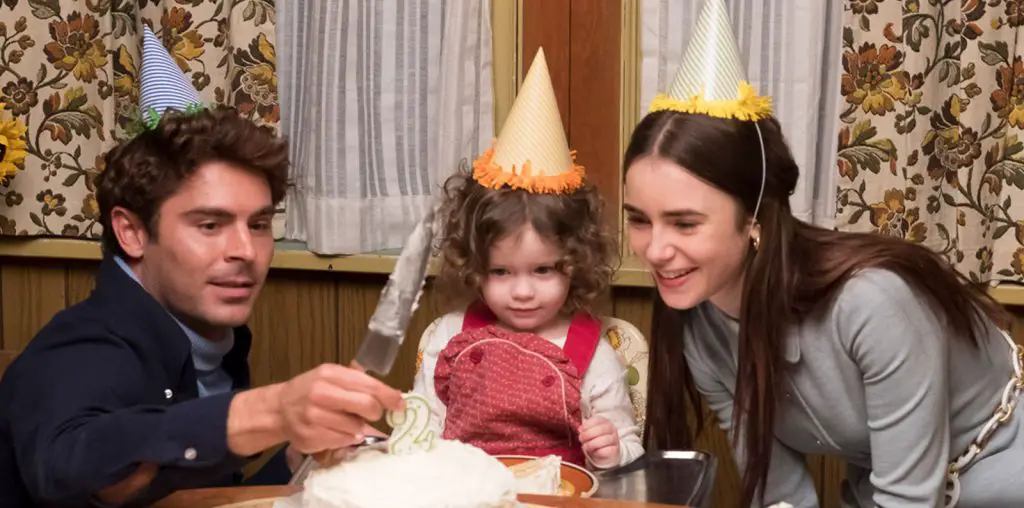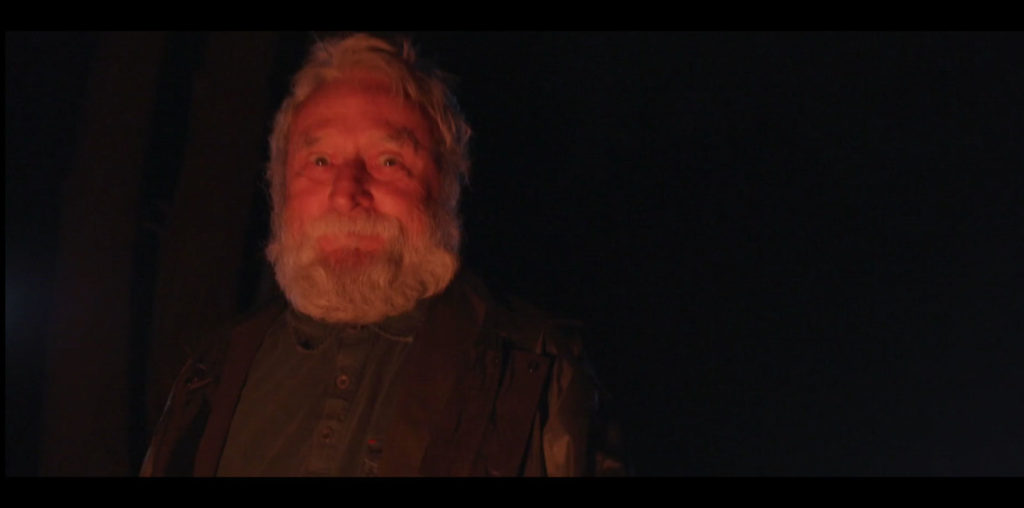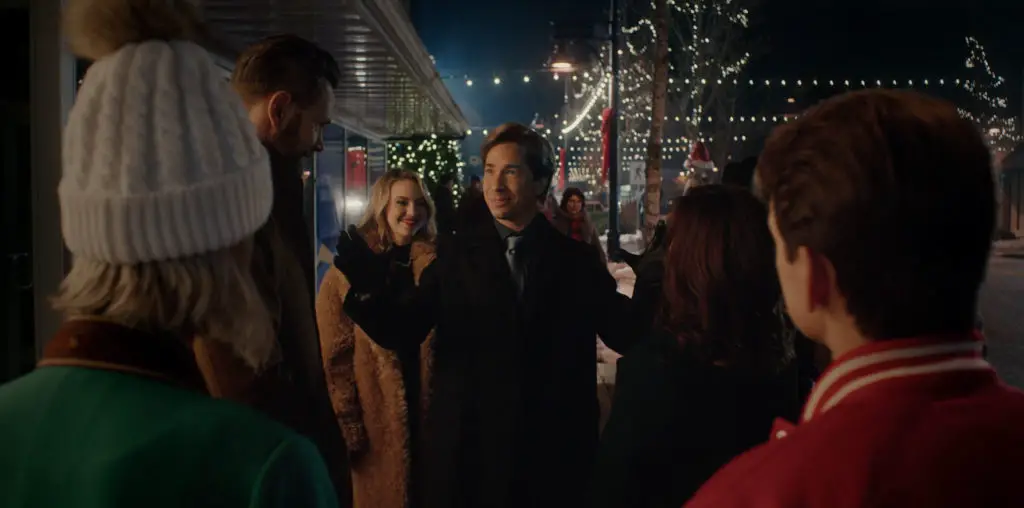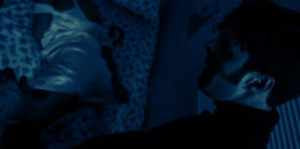
NOW ON VOD! Director Devanny Pin and writers Brandon Slagle and Eric Pereira put a sharpened true story edge on the slasher in the blood-curdling The Black Mass. We begin in 1978 when Ted Bundy (Andrew Sykes) escapes from the prison where he was being held for murdering women. He flees across the country to keep ahead of the manhunt by going from the Pacific Northwest and ending up in Florida.
At this point, Bundy is pickpocketing for money and IDs to make ends meet and drinks non-stop. He circles his VW Beetle over to a local college, compulsively looking for women. He parks across from a sorority house, dismembering with his eyes the female students Heidi (Susan Lanier), Dorothy (Eileen Dietz), Nancy (Jennifer Wenger), and Brenda (Kathleen Kinmont). Their house mother, Darcy (Lisa Wilcox), holds strict rules about no boys on the second floor. But she doesn’t know that one of the deadliest serial killers is crawling around the house, gazing through the windows, wanting to sink his teeth into female flesh.
The Black Mass stabs harder and deeper than other Ted Bundy movies. It even holds up and stands out next to Matthew Bright’s classic indie Ted Bundy, which held the previous high water mark for revulsion. This is because Pinn chose to make a horror film instead of a true-crime flick. It’s an intelligent choice, as the true crime treatment tends to strip a lot of the terror of the bone and has been bled dry by this point. Previous titles focused on the charming front Bundy maintained in order to pass as a human, especially the Mark Harmon-starring mini-series A Perfect Stranger.
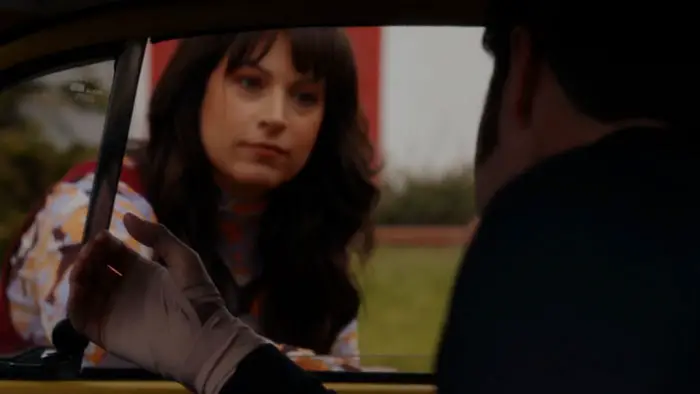
“…one of the deadliest serial killers is crawling around the house, gazing through the windows…”
The director wisely sets the action during the on-the-run period when that front was constantly slipping off, revealing the giant spider seeking prey. There are several scenes where the killer tries to roll out the old Bundy charm, only to be tripped up from constantly hitting the sauce. By peeling back his human camouflage, the story reveals a sickening, inhuman blood spiller instead of a boy next door with a good haircut and questionable hobbies. The title also has a clever double meaning, as it can both refer to the sorority house massacre as an unholy ceremony as well as the description of Bundy given by witnesses describing him as a black mass.
Pinn utilizes the traditions of the slasher throughout The Black Mass. Bundy is as compulsively homicidal a character as any of the most iconic fictional slasher villains. That he was real adds another coat of blood to the grisliness that is pulled off so well here. As a director, Pinn repurposes the slasher tropes with these real-life details to increase the horror. She circles her actresses with the famous POV shots from the killer’s perception, building a clammy sensation that Ted is omnipresent. The recreations of the violence always feel unbearable, even though the scenes are mostly built on clever cutaways and ghastly sound effects. The audience gets saturated with the sensation of being stalked and surrounded by a relentless instrument of death.
The Black Mass has a small-budget look, similar to 1970s John Waters productions. But this turns into an advantage later on, as the look makes all the carnage ultra nasty. The movie hurdles you into the deep end of the indie horror scene. Check this out if the regular crowd of masked maniacs doesn’t cut it for you.
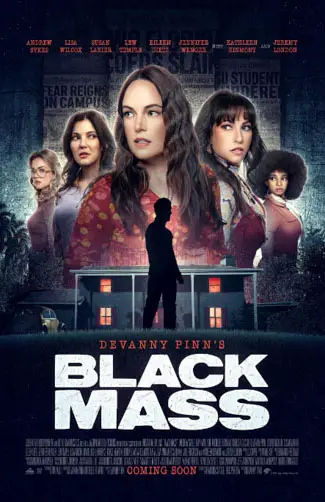
"…stabs harder and deeper than other Ted Bundy movies."
